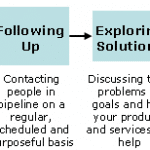Isn’t it odd that publicly-traded companies don’t report on employee wellness in their annual reports?
The precedent for reporting this kind of information is strong, and it offers numerous benefits:
1) Better-informed investors
If you own — or you’re thinking about buying — shares in that high-flying tech start-up, wouldn’t you want to know that the CEO or another key employee, like the head of product development, has a slew of health issues?
If you’re an investor in a large manufacturer, wouldn’t you like to know the details behind the health cost increases that management keeps blaming for poor bottom-line performance? And the actions that management’s taking to mitigate this business risk? After all, health costs are one of the single largest items on most P&Ls these days.
Investors expect (and are legally required) to be informed about risks related to major assets. For example, oil companies disclose the risk of nationalization of their South American facilities.
It’s time for the excuses about how hard it is to measure employee productivity lost to health concerns — or gained through employee wellness interventions — to stop. Employees are the most important asset any company has. Why should investors continue to stay in the dark about the risks and liabilities associated with this asset?
2) Greater corporate wellness accountability
The corporate wellness industry is mired in a swamp of half-baked ROI models based on undisclosed simplifications and assumptions that lack actual evidence.
Start putting hard wellness data in the annual report — where it’ll have to pass a sanity-check by the company’s outside auditors — and this situation will improve so fast your head will spin.
3) Strategic alignment of employer goals and actions
When employers are required to provide a detailed wellness profile of the entire employee population, we’ll see more leadership attention given to strategically aligning wellness investments with the areas of potentially greatest payback.
It’ll move us past the checklist mentality — gotta have a health fair, gotta do biometric HRA for every single employee, gotta have screenings, gotta have pedometers, etc., etc. — to smart investments.
For a manufacturer with an older workforce, that might mean an onsite clinic plus diabetes and cardiovascular disease management programs. In financial services firms, it might mean focusing wellness initiatives on top revenue producers. In a high-tech company, it might mean initiatives focused on sedentary software developers.
4) Better alignment of corporate wellness with best practices
Too many corporate wellness initiatives perpetuate outdated advice, particularly in the area of so-called “prevention.”
Through the use of carrot-and-stick wellness incentives, they effectively mandate an array of screenings like annual mammograms, PSA tests, and annual physicals for all employees regardless of health status or risk profile.
These recommendations directly conflict with current guidelines from authoritative organizations like the Institute of Medicine (IOM) and the U.S. Preventive Medicine Task Force (USPMTF). And they’re often paired with superficial tips like “drink 8 glasses of water every day” that have been debunked for years but just won’t die among wellness professionals.
Exposing these practices to public and investor scrutiny would improve the outcomes associated with employee wellness initiatives while saving time and money that’s currently wasted on ineffective or unnecessary interventions and programs.
5) Greater comparability
Companies use a standardized vocabulary to describe financial risks and results in annual reports. We need a similar vocabulary to talk about the health status of our employee populations and to describe the risks, liabilities and costs associated with preserving this asset.
It’s not enough to simply use the same terms — they need to be defined and measured the same way, by different employers.
We need the employee health version of GAAP (“generally accepted accounting principles”).
Just as revenue is measured the same way by every company, we need a common and consistent language for describing baseline health status, interventions, and post-intervention outcomes.
Who will lead?
There’s a wonderful opportunity here for corporate wellness providers to jointly develop and propose model language and the model report elements appropriate for inclusion in an annual report.
The need is real. The Vitality Institute has proposed just this action, and they’re spot-on. Who else among our industry will rise to the challenge of leading this effort?



